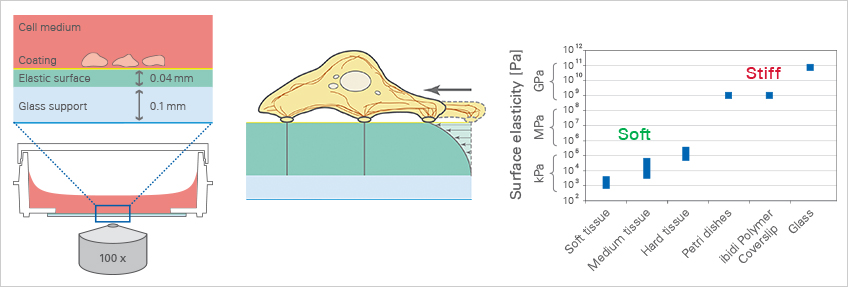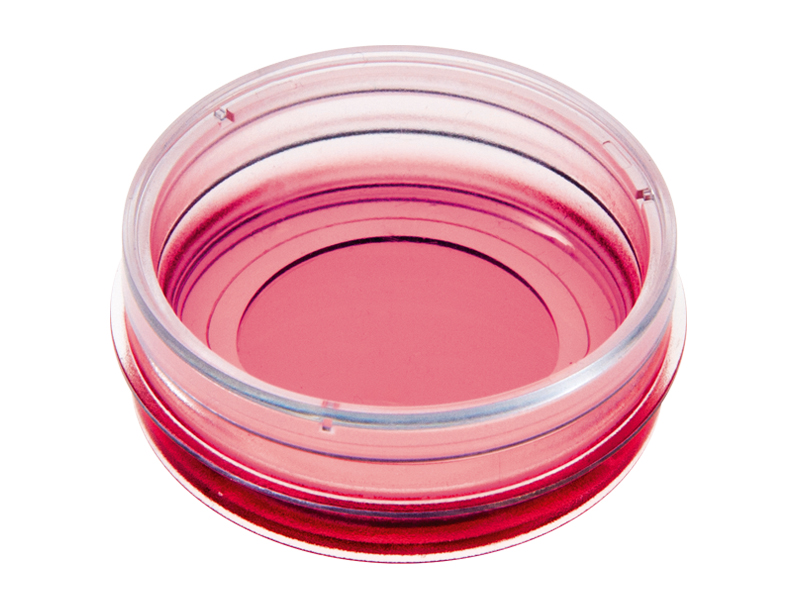Elastically Supported Surface (ESS)
The elastically supported surface (ESS) enables the culture of adherent cells on an elastic surface, mimicking a natural cell environment.
In living tissue, cell growing conditions are different from those commonly found in in vitro cell cultures. A parameter that effects cell proliferation, differentiation, and overall cellular function is the stiffness/elasticity of the surface. The elasticity (Young’s modulus) of most cell culture plastics is around 1 gigapascal (GPa). Young’s Modulus of glass is approximately 70 GPa. In contrast to plastic and glass, the Young’s Modulus of mammalian cells (e.g., muscle cells) is below 100 kPa. Therefore, the natural cell environment is at least 100,000 times more elastic than the standardly applied cell culture surfaces.
The elasticity of the ibidi ESS is comparable to that in cells and tissue. The µ-Dish 35 mm, high ESS is available in three different elasticities: 1.5 kPa, 15 kPa, and 28 kPa. These cover the whole range of elasticities found in living tissue, from soft tissue (e.g., brain or gland) to hard tissue (e.g., cartilage or bone).
As the uncoated ESS surface is hydrophobic and does not allow for any direct cell growth, we recommend extracellular matrix coatings, such as collagen or fibronectin.


Cells seeded on ESS can interact with the surface and deform it.

The µ-Dish 35 mm, high ESS is available in three different elasticities:
1.5 kPa, 15 kPa, and 28 kPa.
Read on and learn more about the ibidi Coverslip Bottom or the Chamber Geometry.




